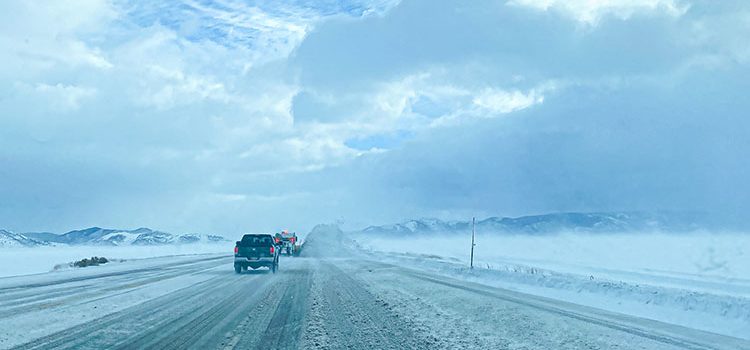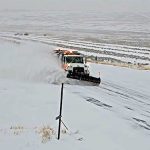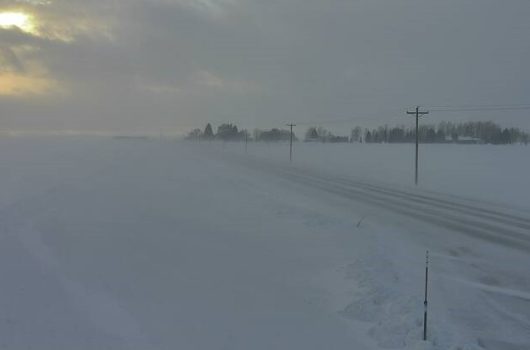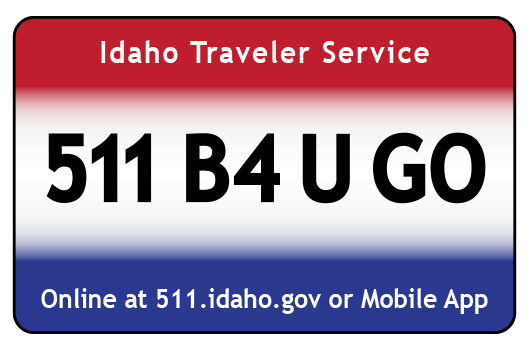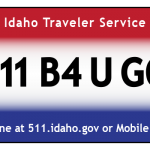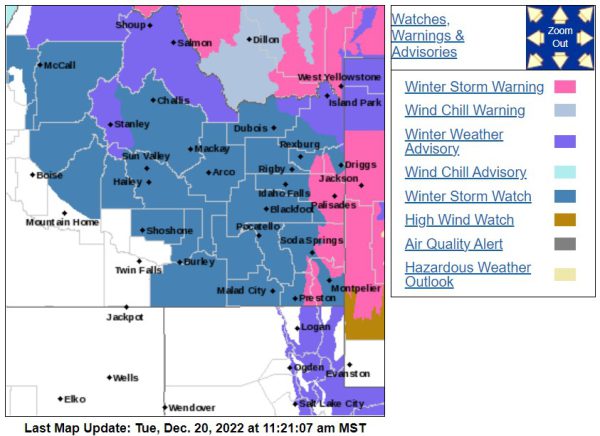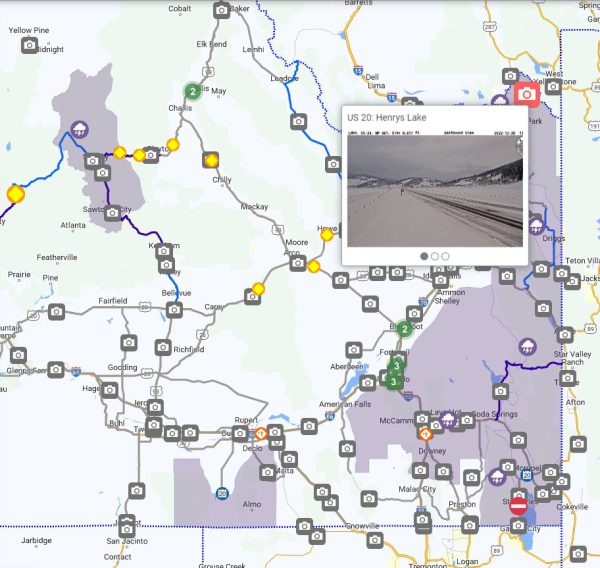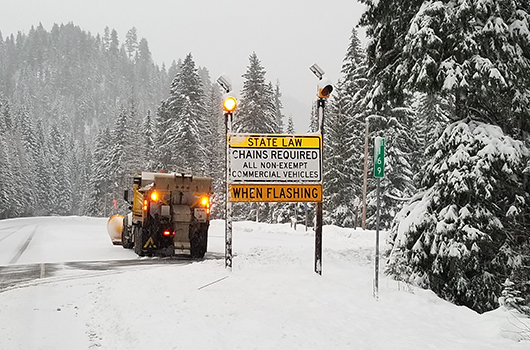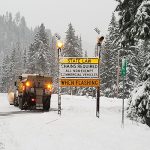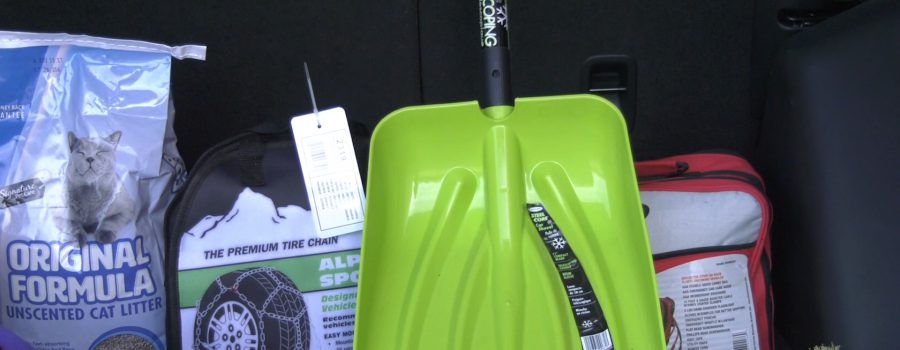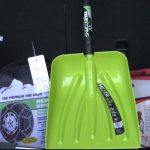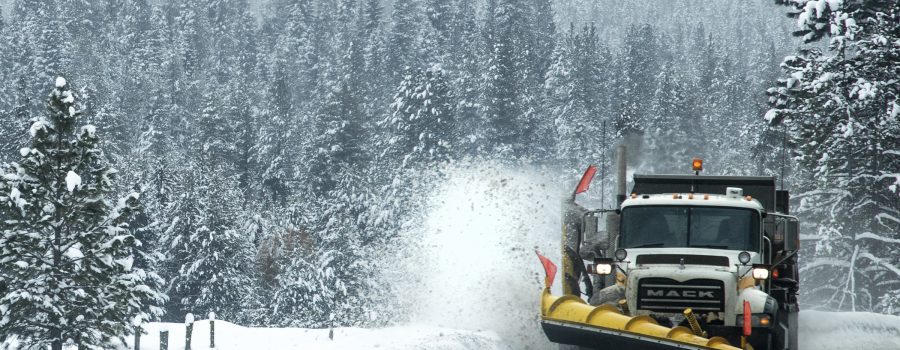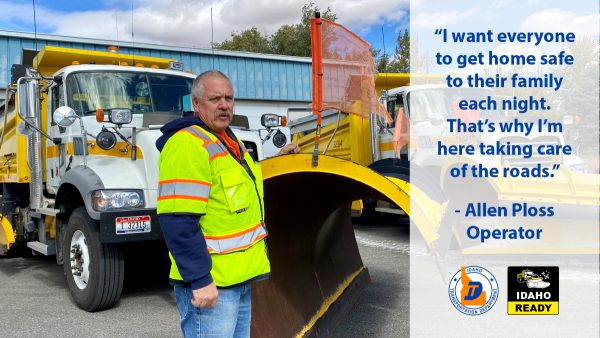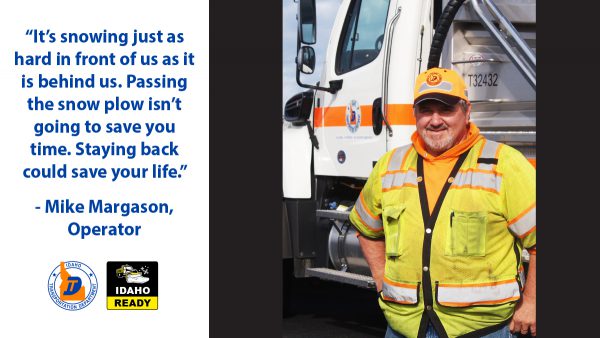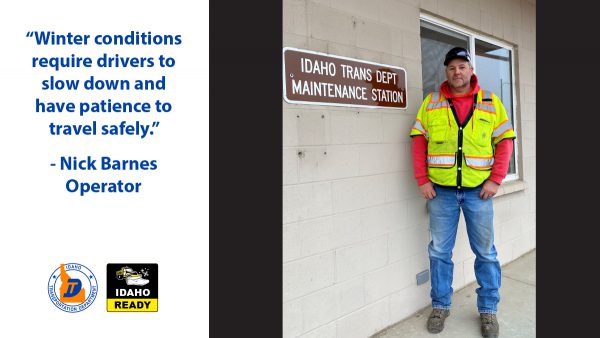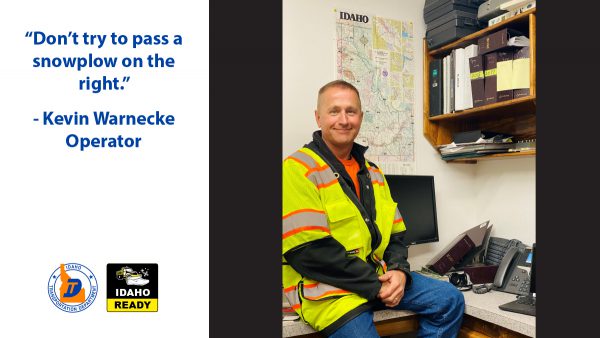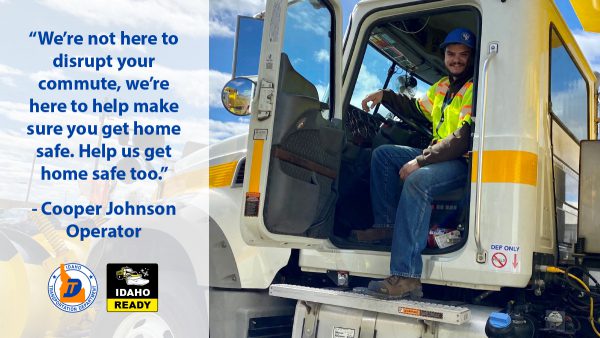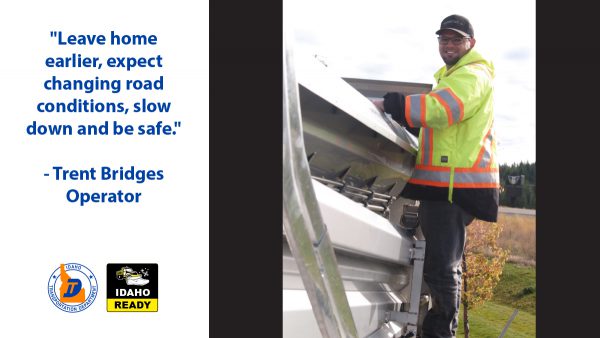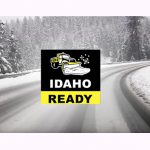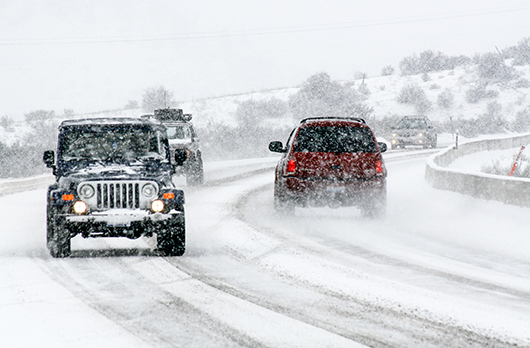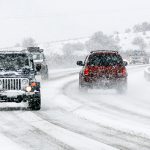If we each had a crystal ball, just think of all the time, money, pain or heartache we could save!
While not exactly a crystal ball, Idaho Transportation Department plow operator Skylerr Valentine, with help from the Idaho Falls shed crew, has come up with an innovation that’s a little bit close. Well, for ITD operations folks in terms of work that is.
Valentine pondered on the fact that while plowing, he would need to make multiple stops through his route to climb up the truck bed and see how much salt was left. This of course involved pulling over, getting out of the cab and physically climbing on the heavy equipment. On newer dump/ plow trucks, a small ladder is fitted to the side of the bed. On older ones that still operate in force across the state, this salt check involves navigating from the stairs of the cab across to one of the rims of the truck bed. Valentine actually once fell while doing just that.
He figured that surely a camera could be installed to show down into the sander box that holds augers and salt. This would allow salt levels to be monitored visually just like wing plows are. He happened to be aware of a truck in east Idaho that was on the surplus sale line and talked to ITD Fleet Manager Dalton Rice about using the outdated wing plow camera from it to test out this innovative idea.
With the help of the entire Idaho Falls crew and ITD electricians Josh Harris and Justin Romrell, that older camera was mounted to the truck bed and wired around, then into the cab, with concern for easy disconnect points to retain dump truck functionality. The smaller screen of the unit was mounted inside, just underneath the tablet typically used by plow operators. Valentine dubbed it the “Salt Seeing Eye.”
“It was a lot of work, figuring it all out just right,” he said. “We really tried to make sure it was waterproof and could stand up to the elements. I wanted to see it put to the test this winter.”
Tablets equipped inside plow trucks show drivers video of where their wing is at, and relay salt and brine output numbers right on the screen. They don’t, however, indicate when salt in the truck bed is gone. Those numbers keep on ticking, and the operator keeps on driving, thinking he’s covering the road when in fact, he’s sure not.
Multiple times Valentine, and surely other operators anywhere, would stop to check salt levels in the bed, only to see that it’s empty and have no idea how long it had been. Then begins backtracking to determine where to pick back up with salt application, essentially doing the same thing over again and wasting time.
“I would make a 70-mile round trip, having run out but no idea where,” Valentine said. “I had no idea how long ago it had been or how many miles really had nothing on the road.”
There are formulas and historical knowledge that can help operators determine just how far so much salt will cover. Let it be said that ITD operations folks could certainly be given science and math degrees for the calculations they’ve mastered when it comes to doing the work they do. They rely on the output readings on the tablet in each truck also. Where those reading don’t stop even if the salt is empty, calibrations aren’t without a significant margin of error though.
“This could really help us find discrepancies in our calibrations,” Idaho Falls Operations Foreman Jared Loosli said. “It has the potential to save a lot of money when it comes to salt ordering.”
This winter, Valentine has indeed had the chance to put the new tool to the test. While plowing the five-lane section of US-20 west of Idaho Falls, he’s determined from the safety of the cab that he can in fact make one more pass on his route, where he normally would have stopped to check or headed back to the shed to refill.
The “Salt Seeing Eye” may not be the crystal ball that can help any one of us avoid bad personal life decisions, unfortunately. But with substantial time saved while snowplows are out doing the vital work they do, increased safety for operators that would no longer have to climb on heavy equipment in slick winter conditions, and visible cost savings through more accurate salt use calculations, this innovation certainly has the potential to greatly benefit operations across Idaho.
Ideally, this camera could come standard on all new ITD trucks and be paired with the typical tablet, becoming one of the options right on the screen operators use now.
